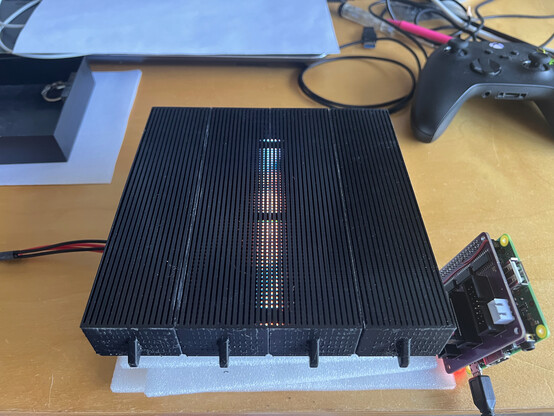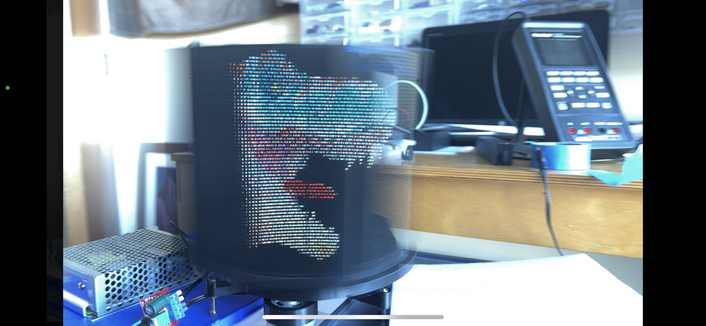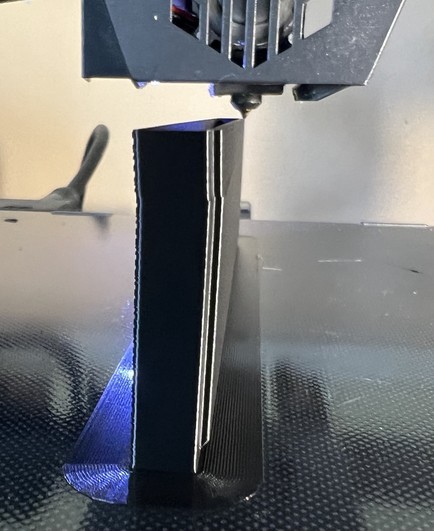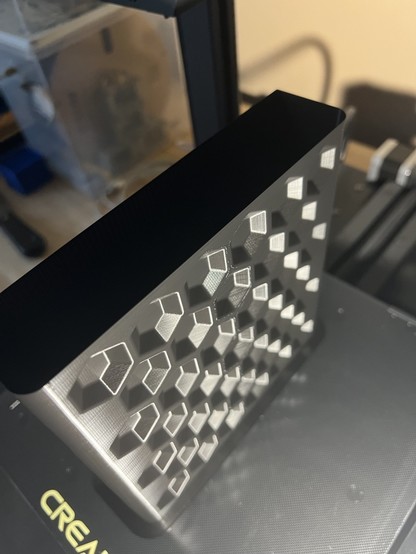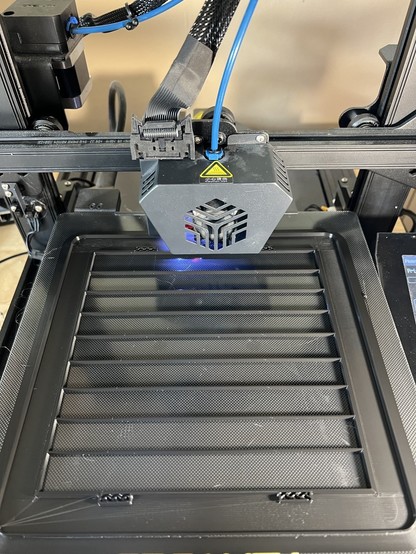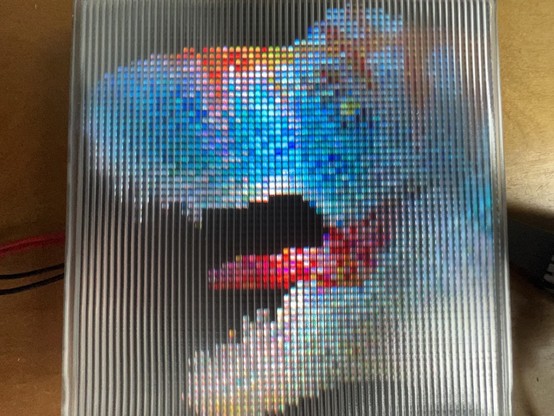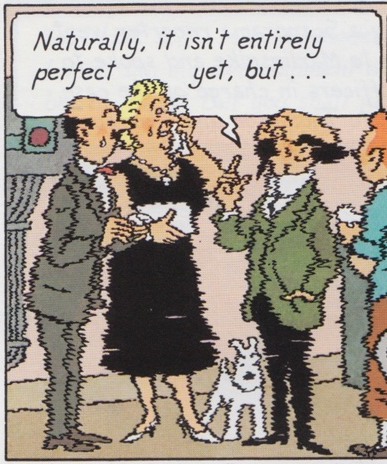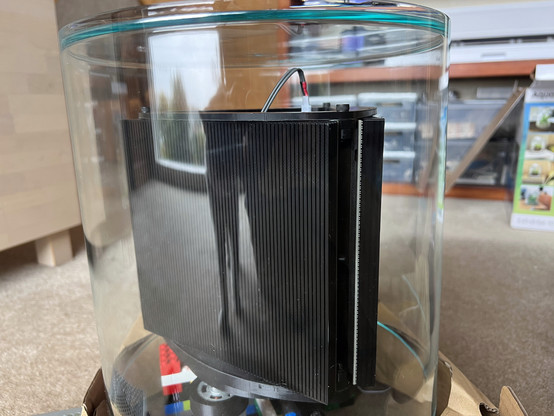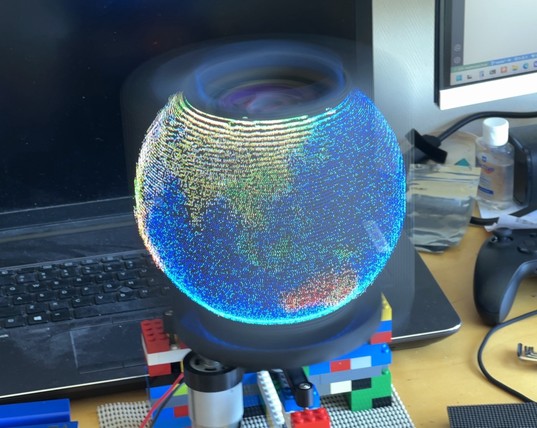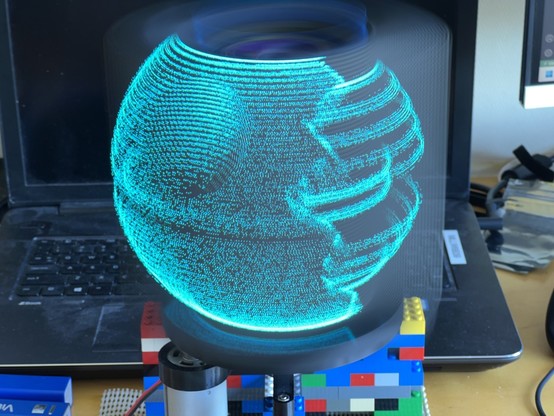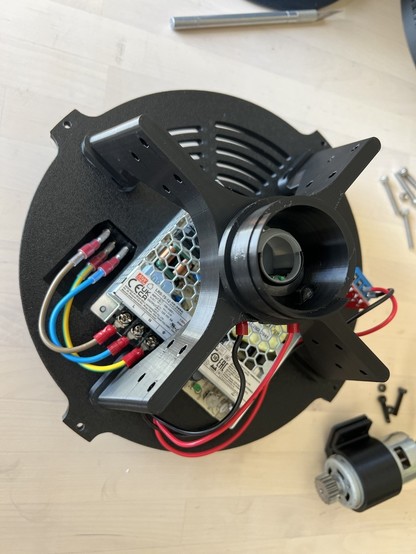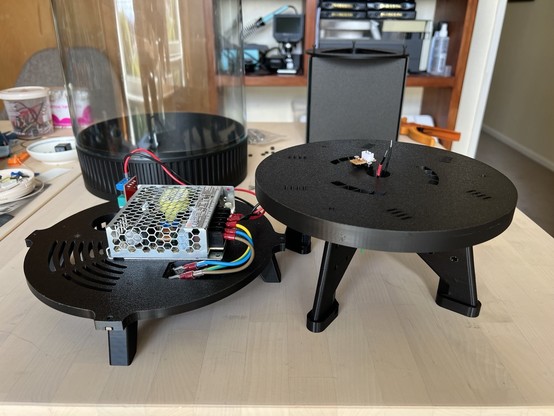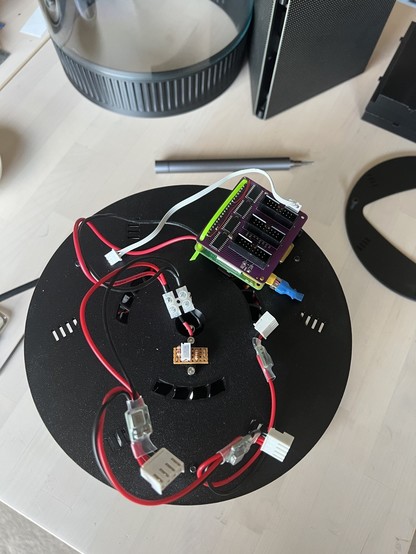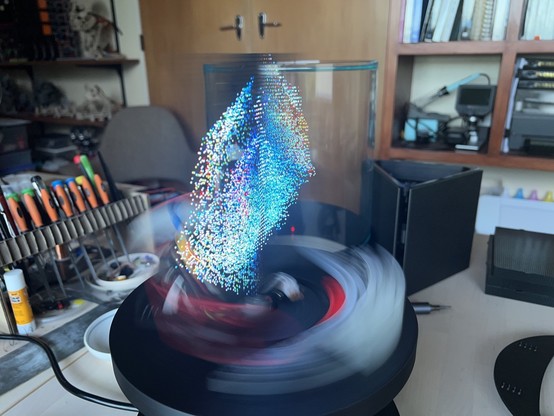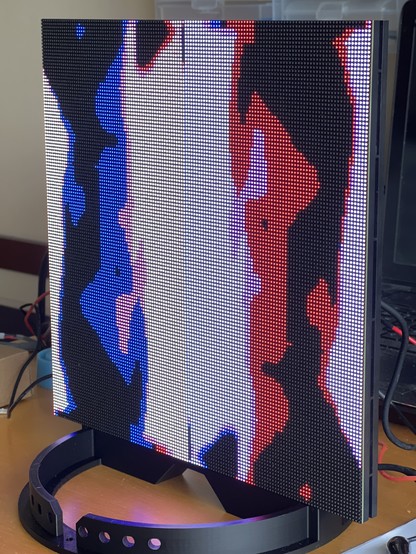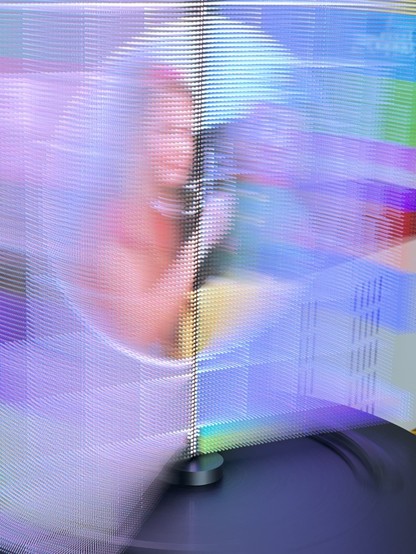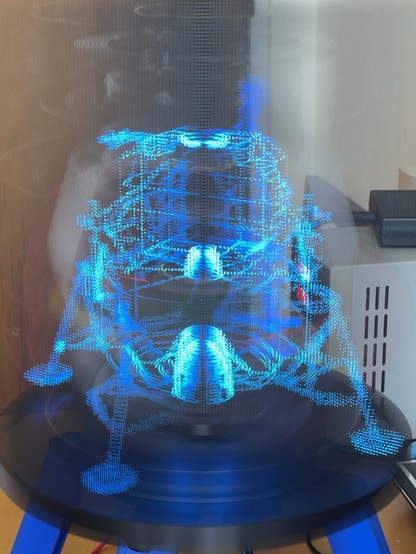If my calculations are correct, when this baby hits 300rpm you're going to see some serious shit.
It's already slightly terrifying.
This is the current approach for reducing the horizontal field of view of the screens - a big heavy box o' slats. I'd like to make a lenticular array, but that's a whole side quest.
The black filament is surprisingly shiny. My first attempt turned out to be a light pipe, and didn't restrict the view. In this version, the slats have a zigzag profile.
It’s very unbalanced with only one collimator attached, so I’m spinning it too slowly for persistence of vision. But I’m sort of able to convince myself I’m seeing depth. There’s a lot of mechanical stuff I need to do before I can start cranking it up.
I have a habit of building displays that are just a confusing flickery mess on video.
The slat based collimators are such a pain, I've decided to go for it and try making lenses instead. I think a 3D printed mould will be good enough - the layer height is very much smaller than the LED size, and a bit of scattering is actually desirable. I'm printing this vertically so the lens profile gets the high resolution. It's going to be precarious when it reaches the top.
I had to turn the print 90 degrees - it wiggles rapidly doing the lens profiles, and when that was on the bed slinging axis it shook the whole room. It's a lot less dramatic when it's just moving the head.
I think I can live with it. I printed it vase mode for speed, so I was expecting it to need a stiffer structure to hold it flat.
I did have another swing at it. The first one I’d hoped to slip intact around a stiffer carrier. This one I made wider, and corrugated, so it printed better.
I’ll chop the front off that, and stick it into this to make the mould.
How can I be out of silicone?
Following a series of poor decisions, I now have both a mould and a vacuum chamber coated in uncured silicone.
Well I got a lens out of it in the end. It does make it more directional, but there’s more light off axis than I need.
I went back to the slats, and finally got all the bits hooked up together.
It sort of works?
You can see what's going on a bit more clearly with a simpler shape. It looks better when you can use both eyes on it!
The depth is smeared more than I want because the collimators are too shallow (because I don't like prints that take more than 16 hours to complete). I want to make them tighter, and spin the whole thing faster to compensate.
The nice thing about these LED panels is that they're very high framerate (and cheap!). I'm updating these at 1.5 KHz - with 3 of them in a ring, that's 4.5 KHz. Just driven in software from a (somewhat dizzy) Raspberry Pi.
Just realised that I can increase the resolution by progressively offsetting each panel by 1/3 the LED pitch.
That should contain or possibly create any shrapnel.
Making parts for this has been a real saga, so while I wait for a faster printer to arrive I tried removing the collimators and running it as a swept volume display. Now I’m thinking maybe that’s what I should have built in the first place.
The thing I've been trying to make creates its 3D effect by displaying a whole different view in every direction, which means it can handle occlusion and fancy lighting at the cost of vertical parallax.
To turn that setup into a swept volume (where it's lighting up the LEDs according to where they are in space - full 3D, but glowy and transparent) I keep everything but the collimators, and just render each view with the near & far clip planes set really close together.
I'll probably make two displays now - finish off the autostereoscopic one, but then rearrange the geometry so that I can sweep through more than just a thickish-walled cylinder.
A quirk of these LED matrix panels is that they simultaneously update two rows at once, separated by half the panel. So on a 64x64 panel, you update rows 0 & 32, 1 & 33, 2 & 34 etc.
However, if you want to sweep one around an axis, you ideally want to update the outer LEDs at a faster rate than the inner ones, and this layout prevents that.
The Ring of Power from Harry Potter.
I’ve mentally moved on from this design, but I went ahead and built it to the point I can call it finished.
The advantages of this approach - occlusion and view-dependent lighting - are undermined by the fact that too much of the colour depth is sacrificed to hitting the necessary framerate. The sort of simple scenes it can display could be displayed better by a swept volume.
Most of the time we don't move our heads up and down very much, so the lack of vertical parallax seemed like it wouldn't be a big limitation. But one of the situations where we do move our heads quite a lot is when presented with a neat little 3D effect sitting on a desk.
Anyway, the new display is going to be amazing.
I even remembered to take some pictures before I put it all together.
Scouring Aliexpress for LED panels for the new display, and it seems the higher resolution ones tend to be flexible. I spent a while investigating developable surfaces* to see how I could take advantage of this, but couldn't come up with a layout that offers any advantages over a flat square centred on the axis. Seems disappointingly pedestrian.
(*Twisting a sheet of paper in my hands)
I'm arranging it as two rectangular panels arranged with their bottom edges touching on the axis, which lets me update columns at the same radius simultaneously. The outer columns need to be updated more frequently than the inner columns, and one of the nice things about these LED panels is that you choose your own update strategy - you're not stuck with scanning a whole frame each time.
If the lines were completely independent, you could evenly scan a sector with half the number of line updates compared to updating the whole frame. As it is, each line has to be updated in parallel with one that's half a panel further down, so it ends up taking 3/4 of the line updates instead (because some updates have to update the outer line while scanning out black to the inner line).
Display 1 currently serving as convenient rotating testbed.
The thing about voxels is that even when they’re not working, they look cool.
